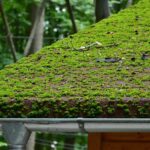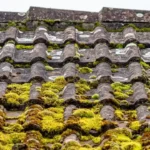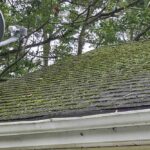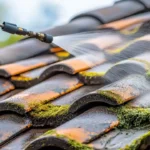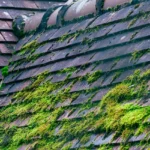When it comes to safeguarding your home, understanding roof drainage design tips is crucial. A well-designed roof drainage system not only protects your property from water damage but also enhances its longevity. This article will guide you through essential tips to ensure your roof drainage is efficient and effective.

Why is Roof Drainage Important?
Effective roof drainage is vital in preventing water accumulation, which can lead to structural damage, leaks, and mold growth. It plays a critical role in maintaining the overall health of your home. By implementing strategic roof drainage design tips, homeowners can avoid costly repairs and enhance their property’s value.
Understanding Different Roof Types
Flat Roofs
Flat roofs require specialized drainage solutions to prevent water pooling. Systems like scuppers, internal drains, and gutters are commonly used. For more information on flat roof drainage solutions, visit our detailed guide.
Sloped Roofs
Sloped roofs naturally facilitate water runoff, but they still require efficient gutter systems to direct water away from the house. Learn more about sloped roof drainage systems.
Key Components of Roof Drainage Systems
Gutters and Downspouts
Gutters and downspouts are essential in channeling water away from the roof. Ensure they are regularly cleaned and free from debris to function effectively.
Scuppers
Scuppers are openings on the edge of a roof that allow water to drain off. They are particularly useful for flat roofs.
Internal Drains
These are installed on flat roofs to collect water and direct it to the drainage system. They are ideal for large commercial buildings.
Maintenance Tips for Roof Drainage Systems
Regular Inspections
Conduct regular inspections to identify and address potential issues early. Check for clogs, leaks, and any signs of wear and tear.
Cleaning and Debris Removal
Keep your gutters and drains clear of leaves, dirt, and other debris to ensure optimal performance.
Professional Assistance
Consider hiring professionals for thorough inspections and maintenance, especially if you’re unsure about handling it yourself.
Choosing the Right Roof Drainage System
Selecting the appropriate drainage system depends on your roof type, climate, and local regulations. For guidance on choosing a system, explore our tips on how to choose a roof drainage system.
Common Roof Drainage Issues
Understanding common problems like clogs, leaks, and improper slope can help you take preventive measures. Dive into our article on common roof drainage issues for more insights.
Innovative Roof Drainage Solutions
Explore modern solutions such as green roofs and rainwater harvesting systems to enhance your home’s sustainability. External resources like Cloud Roofing’s blog offer additional perspectives on innovative systems.
Environmental Considerations
Consider eco-friendly options that reduce environmental impact and promote water conservation. Implementing sustainable drainage solutions can contribute to a greener planet.
Cost Implications of Roof Drainage Systems
Understanding the cost factors involved in installation and maintenance can help you budget effectively. Initial investment in quality systems often leads to long-term savings.
Weather and Climate Impact
Adapt your roof drainage design to suit your local climate. For instance, areas with heavy rainfall may require more robust systems.
Innovations in Roof Drainage Technology
Stay updated with the latest technological advancements in roof drainage for more efficient systems and solutions.
Advantages of Proper Roof Drainage
Proper roof drainage extends the lifespan of your roof, prevents structural damage, and reduces maintenance costs.
Conclusion
Implementing effective roof drainage design tips is essential for protecting your home and ensuring its longevity. By understanding the different components and maintenance practices, homeowners can create a robust system that withstands various weather conditions.

FAQs
What is the best drainage system for a flat roof?
Scuppers and internal drains are popular choices for flat roofs. They effectively remove water and prevent pooling.
How often should I clean my gutters?
Regular cleaning is recommended, especially during fall and spring, to prevent clogs and maintain efficient drainage.
Can I install a roof drainage system myself?
While minor maintenance can be done by homeowners, professional installation is advisable for complex systems to ensure they are correctly set up.
This article contains affiliate links. We may earn a commission at no extra cost to you.




